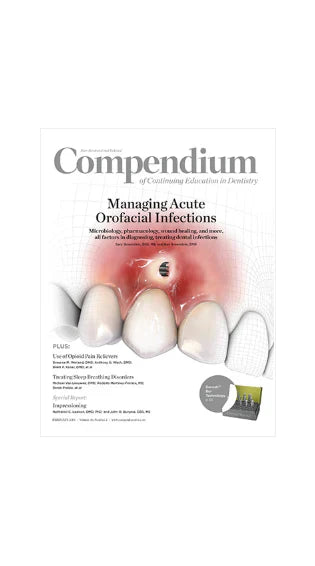Safety of a Water Flosser: A Literature Review
Jolkovsky DL et al. Compendium of Continuing Education in Dentistry 2015; 36(2):2–5.
Objective
Since the introduction of the first Waterpik™ Water Flosser in 1962, more than sixty clinical trials have been published. Collectively, these studies demonstrate significant plaque removal, reduction of gingival bleeding, and reversal of inflammation (gingivitis).
The majority of the studies are randomised controlled trials, published in peer-reviewed journals, providing clinicians with robust evidence for informed decision-making. This literature review was designed specifically to address the safety of the Water Flosser.
Methodology
The review was divided into four key areas:
-
Histological findings
-
Subgingival pathogens
-
Probing pocket depth and clinical attachment levels
-
Bacteraemia
Results
-
Histological findings: Studies showed a significant reduction in inflammation at the cellular level compared with non-treated sites, which displayed varying levels of inflammation. This confirms that a Waterpik Water Flosser is safe for periodontal pocket tissue.
Subgingival pathogens: Research demonstrated a significant reduction in subgingival pathogens, even in deep pockets, with use of a Waterpik Water Flosser - a result not generally observed in non-Water Flosser sites. This addresses concerns that bacteria might be driven deeper into pockets.
Pocket depths and clinical attachment levels: Studies reported significant improvement or stability in probing pocket depth and clinical attachment levels, dispelling concerns that a Waterpik Water Flosser could disrupt the epithelial attachment.
Bacteraemia: Findings showed that the incidence of bacteraemia was comparable across toothbrushing, flossing, wooden sticks, water flossing, and mastication.
Conclusion
The Waterpik Water Flosser has been unequivocally proven safe in clinical studies spanning more than five decades.
Findings from Clinical Studies on the Safety of the Waterpik Water Flosser
-
Histological reduction in inflammation
-
Reduction or stability of probing pocket depth
-
Improvement or stability of clinical attachment levels
-
Removal of subgingival pathogenic bacteria
-
Improvements in morphological subgingival flora
-
No adverse effects reported
-
Clinical changes demonstrating reductions in gingivitis, inflammation, and plaque
